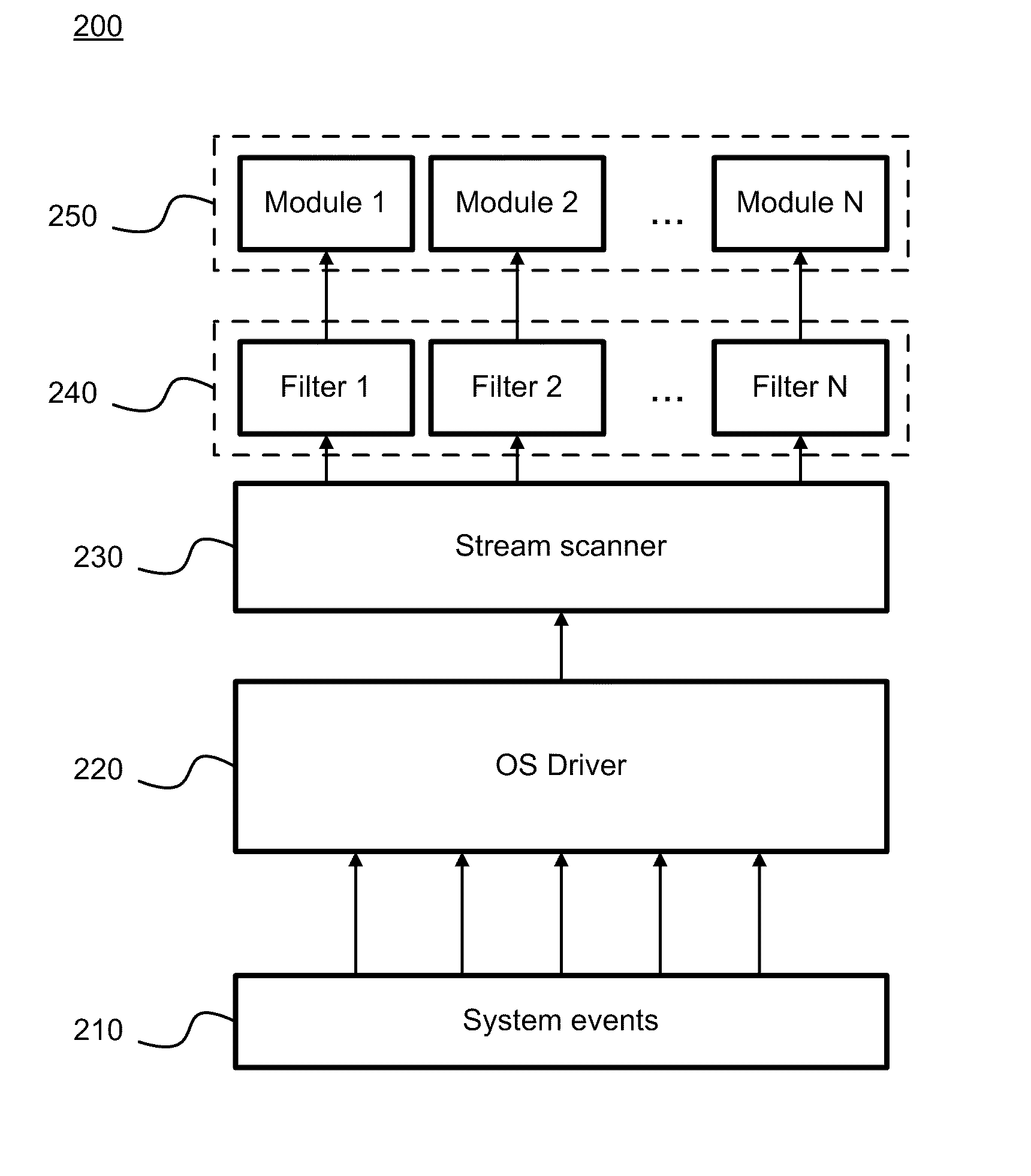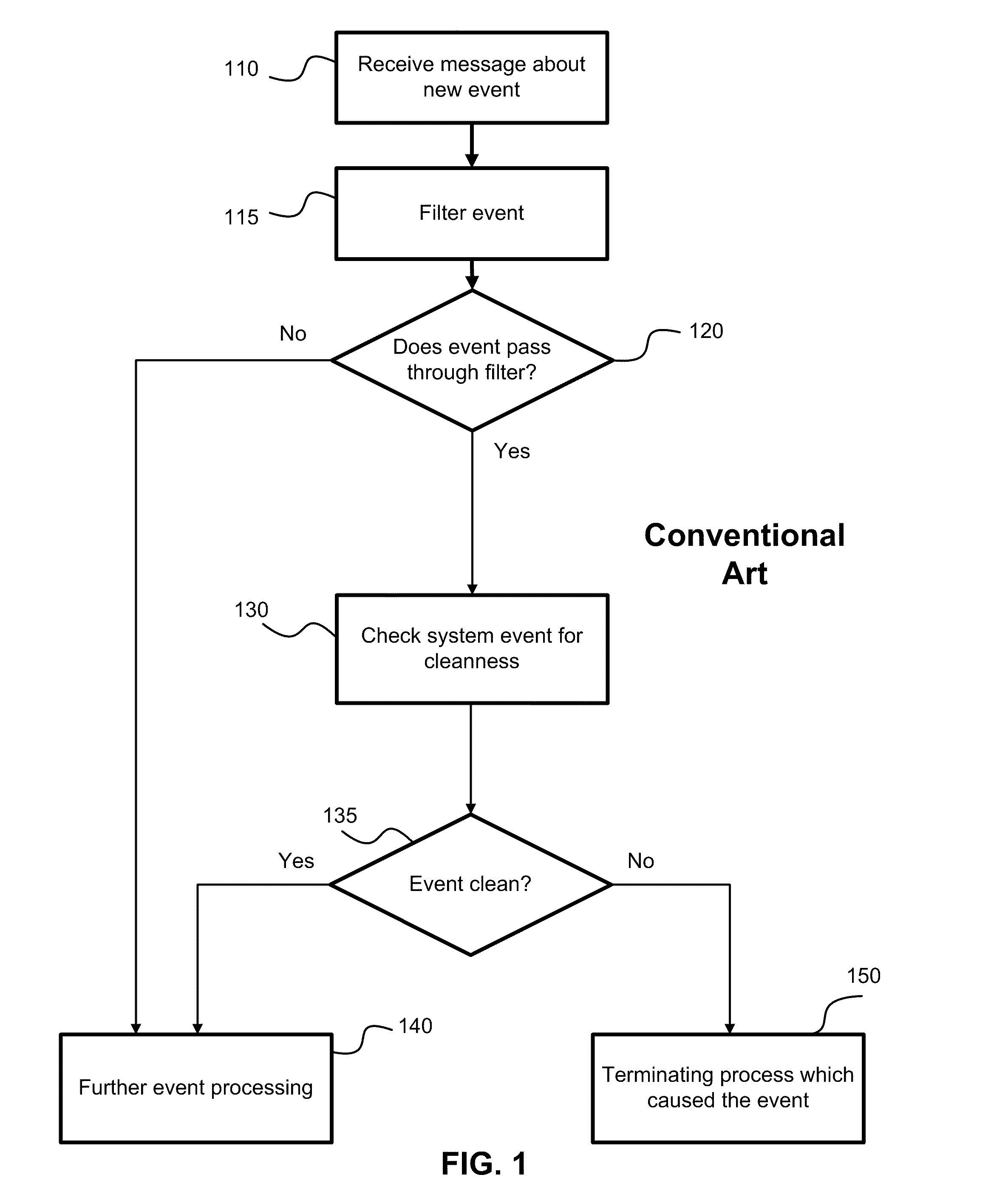Asynchronous processing of events for malware detection
a technology of asynchronous processing and events, applied in the field of antimalware technology, can solve the problems of loss of e-mail capability, service problems, and dramatic e-mail mediated virus attacks, and achieve the effect of optimizing the processing of a malware threat and increasing the probability of malware detection
- Summary
- Abstract
- Description
- Claims
- Application Information
AI Technical Summary
Benefits of technology
Problems solved by technology
Method used
Image
Examples
Embodiment Construction
[0031]Reference will now be made in detail to the preferred embodiments of the present invention, examples of which are illustrated in the accompanying drawings.
[0032]In one aspect of the invention, there is provided a system, method and computer program product for malware detection based on behavior of applications running on a computer system.
[0033]According to the exemplary embodiment, the existing methods of malware detection are accelerated. The events are processed asynchronously and the applications generating the events are analyzed in terms of being malicious. The asynchronous processing of the events allows to process the events caused by processes (i.e., applications) while these processes continue to run on a computer system. According to the proposed method the behavior of an application can be compared against a set of rules defining a sequence of the normal system activities (i.e., behavior patterns). Each rule defines a set of actions of a trusted application and th...
PUM
 Login to View More
Login to View More Abstract
Description
Claims
Application Information
 Login to View More
Login to View More - R&D
- Intellectual Property
- Life Sciences
- Materials
- Tech Scout
- Unparalleled Data Quality
- Higher Quality Content
- 60% Fewer Hallucinations
Browse by: Latest US Patents, China's latest patents, Technical Efficacy Thesaurus, Application Domain, Technology Topic, Popular Technical Reports.
© 2025 PatSnap. All rights reserved.Legal|Privacy policy|Modern Slavery Act Transparency Statement|Sitemap|About US| Contact US: help@patsnap.com



